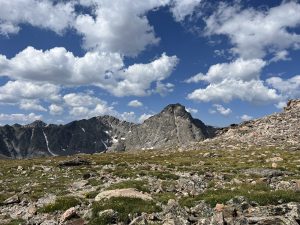From the Colorado Snowsports Museum in Vail: A look at proto-snowboards
Special to the Daily

Special to the Daily |
The following is part of a series of articles compiled by the Colorado Snowsports Museum and Hall of Fame that take a closer look at some of the priceless artifacts and stories contained in the museum’s archives. The Colorado Snowsports Museum, located in the Vail Transportation Center, is currently under construction on a $2.4 million privately funded transformation that will refurbish the 24-year-old facility, add new exhibit space and modernize exhibits with interactive technology.
Skiing and the 10th Mountain Division are the cornerstones of Vail’s history and success, which the museum preserves and celebrates year-round. The museum has been one of the favorite family-friendly visitor attractions in Vail for 41 years and, with these improvements, the museum will be the best and most comprehensive ski museum in the world.
THE ROOTS OF SNOWBOARDING — THE BUNKER COMPANY’S SNO-SURF
Until fairly recently, there has not been a great deal of knowledge about whether a snowboard-like sport existed prior to the 1960s. But in 2008, while working on the film “Legends,” snowboarders Jeremy Jones and Stefan Gimpl traveled to a remote village in Turkey’s Kackar Mountains. There, they discovered that residents had been riding a device called a lazboard for more than 400 years. Comparable to a Snurfer, the board featured a rope in front and a stick held by the rider for balance.
A similar device was patented in the U.S. in 1939 by Gunnar and Harvey Burgeson and Vern Wicklund. Made of solid white oak, the invention was called a “Sno-Surf” and featured an adjustable strap for the left foot, a rubber mat to hold the right foot, a rope with loop used to control speed and steer, and a guide stick used to steer.

Support Local Journalism
Akin to modern snowboarding, the rider would be in a semi-crouched position. A pair of one-of-a-kind original Sno-Surf prototypes will be on display at the new Colorado Snowsports Museum when it reopens in December, on loan from Gunnar Burgeson’s son, Don Burgeson.
The name — Sno-Surf — indicated that this was not another stand-up sled, and the beginnings of snowboarding were becoming more apparent. The three men formed The Bunker Company and tried to sell the boards during the 1930s, but Wilson Sporting Goods turned down an offer to distribute the Sno-Surf and the idea fizzled out by World War II.
As a possible precursor to the snowboard, this unknown story was unveiled at the 2000 Ski Industries America Trade Show by Burton Snowboards, which displayed the original patent, prototype and a video of Vern Wicklund riding the device down a hill in Oak Park, Illinois, in 1939.
More boards were patented after World War II, but single-plank concepts did not arise until the 1960s, when Tom Sims made one of the world’s first snowboards in a 7th grade woodshop class, calling it a “skiboard.” Meanwhile, several patents were granted for very similar-sounding inventions, including: Snow Board (1967), Snow Sled (1968), Snow Ski Board (1968) and Snow Surfboard (1971).
However, with the exception of Tom Sims, none of these ever had an impact on the market — except Sherman Poppen’s 1965 Christmas Day invention: the Snurfer, an inspiration for kids of the 1960s everywhere to “surf” on snow.
CECILE RYDEN JOHNSON—AMERICA’S FOREMOST SKI ARTIST
The Colorado Snowsports Museum houses several works by renowned artist Cecile Ryden Johnson. She was an internationally known, 20th century American watercolorist, influenced by the “plein air” tradition of artists who left their studios and traveled to paint in natural settings. Johnson gained recognition for capturing the unique beauty and feeling of natural color, light and shade of landscapes.
The image featured is a digitized version of Johnson’s watercolor painting of Aspen in the 1970s. Donated by the artist, this work beautifully depicts Ajax Mountain from Aspen Village. This painting, and most of Johnson’s work, was directly inspired by her travels and the natural settings she visited, perfectly capturing place and time.
Johnson loved the outdoors and she loved sports. This love and her consummate skill at capturing action live at sporting events led to a variety of commissions to paint on camera from ABC Wide World of Sports, Canadian Broadcasting, the BBC, CNN and other television networks. ABC and CBC broadcast her painting in action at five Winter Olympic Games, including the men’s and women’s Gold Medal rounds in figure skating as well as the famous 1980 “Miracle on Ice” Olympic hockey game between the U.S. and Russia in Lake Placid.
Known as “America’s foremost ski artist,” the U.S. Olympic Committee’s Fine Arts Committee selected Johnson to produce the official lithographs for the 1980 Lake Placid Winter Games, and the design of the official lapel pin.
In anticipation of the 1992 Albertville Winter Olympics, officials from the Savoie region of France came to Johnson’s studio at Des Artistes in New York to invite her to depict the Winter Games there. In March of 1993, she covered World Cup events in Lillehammer, Norway, alongside film crews from CBS to paint in advance of the 1994 Games.
Cecile Ryden Johnson passed away in 2010.










